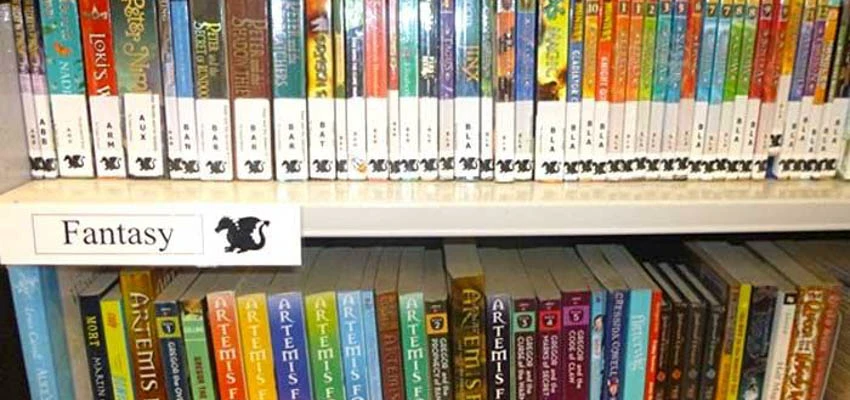Genrefication — one primary school librarian's experience

When Michelle Simms, Library Manager at Te Totara School read an article by Jennifer LaGarde, she was inspired to transform her fiction collection by shelving it by genre.
The inspiration for the genrefication project
My name is Michelle Simms, Library Manager at Te Totara Primary School. Te Totara is a contributing primary which opened in 2008 to cater to a rapidly growing area in the north of Hamilton. We now have 800 students from a range of backgrounds.
My decision to shelve our fiction section by genre came after reading the article, Five more conversations [about school libraries] that I don't want to have anymore. I realised I couldn’t find any reason not to do it. Surely anything we can do to help our students find more of the books they like to read is a good idea!
Five more conversations [about school libraries] that I don't want to have anymore (pdf) — article by Jennifer LaGarde from Collected magazine, November 2013, p.5-6.
Selecting the range of genres
I began my genrefication project by working out which genres I wanted — fantasy, science fiction, adventure, mystery, humour, animals, historical fiction, realistic fiction, horror and sport. I found a great site for copyright-free clipart called Pixabay that had just what I needed to choose my own spine label images, and then I approached Book Protection Products to get them printed.
Sorting the fiction by genre — the process
My original plan was to continue to shelve most of the fiction A-Z and every 3 weeks add a new genre until I finally had all 10 set up at the end of 30 weeks or so. This was to spread out the workload.
However, nearing the end of Term 1 I was already running out of patience. To speed up the process, I took the books that had really obvious genres home. After applying stickers and tape, I then changed their genres on the catalogue.
In the Term 1 holidays I went in and with the aid of a few children, rearranged all the fiction shelves. We removed all the books that had genre stickers and put them on the floor under their genre headings. We put all the books currently without genre labels in one place (a very visual to-do list). Then we re-shelved the books in their own genres. It took less than 2 hours to do the rearranging and we were able to start Term 2 with all genres in their own sections.
New usage data created
I am now able to run statistics showing me each genre's most popular books. I can also see how many books I have in each genre and how many are issued at any one time. This is really helpful data for collection development.
Challenges and benefits of shelving by genre
The biggest issues I’ve found with shelving by genre affect librarians more than students. These are:
finding a genre for each book when some books don't fit nicely into just one genre. I check the subject headings of difficult books. Also useful are the genres other people have assigned to a book on a site like GoodReads.
the amount of time it takes to implement the project.
I have also heard some criticism from other librarians who worry about not achieving ‘wide reading’. My feeling is that we need to focus on increasing students’ reading mileage first, by giving easy access to books similar to ones they have enjoyed. Then we can achieve wide reading by promoting different genres and broadening students’ reading tastes.
The feedback I've had from teachers has been overwhelmingly positive, but I think the proof is in what the students have thought about it.
Students' feedback — including survey data
At the beginning of the year, prior to shelving by genre, I talked with our 6 Yr5/6 classes (172 students) and then gave them a very short questionnaire. I repeated this in November, after the students had been using books shelved by genre for a few terms.
In March, over 98% of our students predicted that shelving books by genre would make it easier for them to find books to read. In November, 97% of students said that genre shelving had made it easier for them. I think the results showed that we lived up to our students' expectations of how genre shelving would help them.
At the beginning of the year, 17% of our students reported that they didn't find it easy to choose a book to read. The main reason they gave was that there were "too many books". By November, the number of students finding it hard to choose a book to read had fallen to just 4%.
I am very excited by this drop of 13%. I love that changing the way the books are shelved, reducing a big expanse of books to smaller genre sections, has made a positive difference in helping students find the books they want to read!